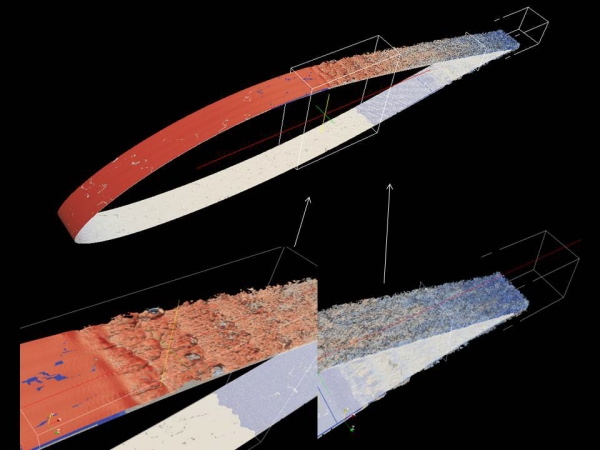
Business
News
GE, Sandia and Red Mesa work on quieter, more-productive wind turbines
August 16, 2013 | By Anthony Capkun

August 15, 2013 – GE Global Research—the technology development arm of the General Electric Co.—discussed research that, it believes, could significantly impact the design of future wind turbine blades. Using high-performance computing (HPC) to perform complex calculations, GE engineers have overcome previous design constraints, they say, allowing them to begin exploring ways to design reengineered wind blades that are low-noise and “more prolific power-producers”.
Partnering with Sandia National Laboratories, GE’s work focused on advancing wind turbine blade noise prediction methods. Aerodynamic blade noise is the dominant noise source on modern, utility-scale wind turbines and represents a key constraint in wind turbine design, says GE. The company figures a 1-dB quieter rotor design would result in a 2% increase in annual energy yield per turbine.
“By using [HPC] to advance current engineering models that are used to predict blade noise, we can build quieter rotors with greater blade tip velocity that produce more power,” said Mark Jonkhof, wind technology platform leader at GE Global Research. “This not only means lower energy costs for consumers, but also a significant reduction in greenhouse gas emissions.”
To ensure its blades do not pose noise issues today, GE says airfoil level acoustic measurements are performed in wind tunnels, field measurements are done to validate acceptable noise levels, and noise-reducing operating modes are implemented in the control system. The company adds better modelling will help maintain the current low noise levels while boosting output.
GE’s testing involved Sandia’s Red Mesa supercomputer running a high-fidelity Large Eddy Simulation (LES) code to predict the detailed fluid dynamic phenomena and resulting wind blade noise.
“We found that high-fidelity models can play a key role in accurately predicting trailing edge noise,” Jonkhof said. “We believe that the results achieved from our simulations would, at the very least, lay the groundwork for improved noise design models.”
Photo 1: Transition of flow to turbulence on a wind-turbine airfoil. Displayed are isosurfaces of vorticity from a Large Eddy Simulation (LES).
Photo 2: Noise generation due to turbulent flow over the trailing edge of a wind turbine airfoil. Dilatation contours from a Large Eddy Simulation (LES) are shown in the background. (Courtesy Prof. Lele, Stanford University)
Print this page